Abe Monju-in Temple: Academic Success & the Way of Yin & Yang
2022/05/16
Looking to check out something a outside of the norm during your time in Japan? Well Nara Prefecture, with its ancient and highly diverse history is the perfect place to explore for you, and perhaps no place better exemplifies the area’s unique character better than Abe Monju-in Temple. Here you won’t just find a fascinating and old Buddhist institution, but also an astronomical observatory, ancient kofun tomb mounds, unexpectedly charming flower garden art, and more!
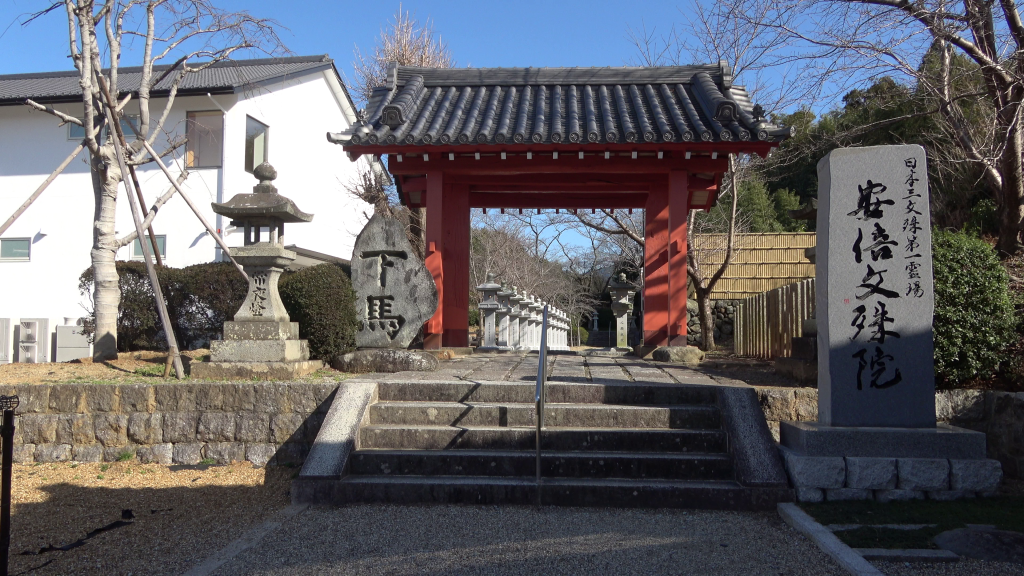
The front entrance to the temple. The old “下馬” (“geba”) kanji sign to the left of the gate instructs all visitors to dismount from their horse before entering as it is an important act for showing one’s humility.
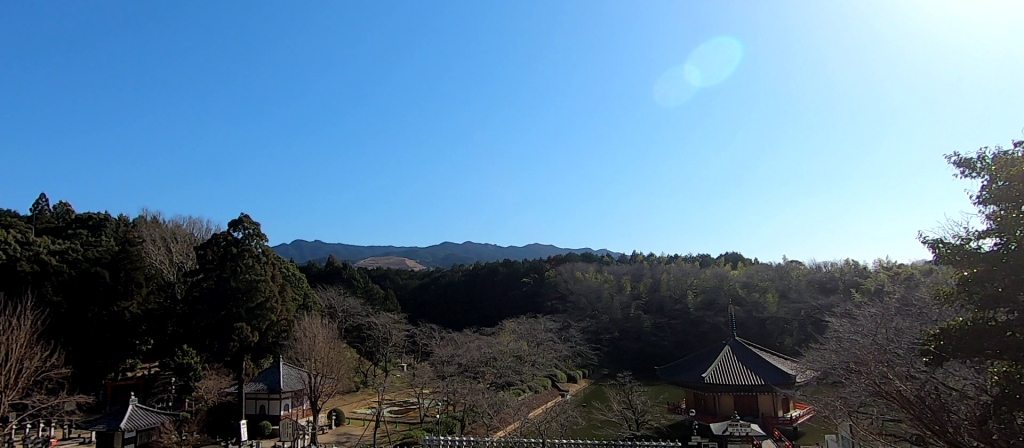
The Way of Yin & Yang or “Onmyodo” as it is known in Japan, is an ancient tradition based in China but whose influence also spread to other regions, including through the Korean Peninsula and Japanese archipelago. Throughout Japanese history, some of these practitioners of Onmyodo, (known as “Onmyoji), became renowned and influential figures for what was believed to be their depth of knowledge on a variety of topics from medicine to understanding the nature of the cosmos. Onmyoji sometimes even served as scholars and high ranking advisors in government, as they were believed to have the ability to predict future events, such as natural disasters, and perform rites that were believed to prevent such things from coming to pass.
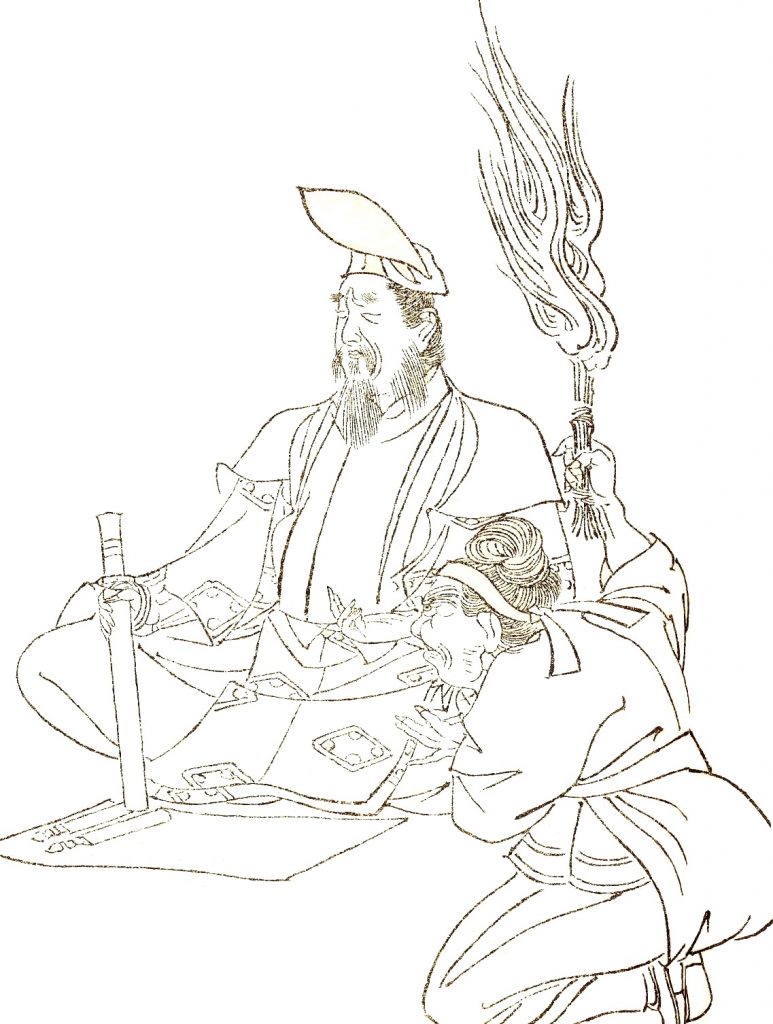
Abe no Semei as drawn by the artist Kikuchi Yosai (1788 – 1878)
One especially famous of Onmyoji was Abe no Semei (921-1005 CE), who became so renowned for his abilities that he is commonly referred to as Japan’s own Merlin and according to legend, was half kitsune (magical fox), on his mother’s side. It also just so happens that he was born in the modern day area of Sakurai City, Nara Prefecture on the grounds of what is now known as Abe Monju-in Temple.
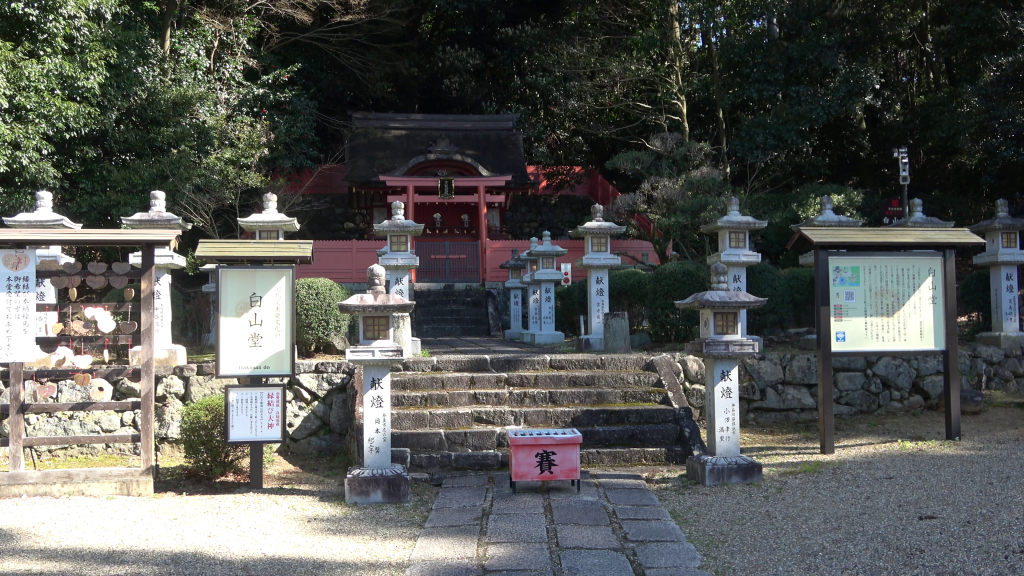
The Hakusan-do Shrine (located on the grounds of Abe Monju-in), which is believed to be place to pray for finding romantic partners. It is also connected to Abe no Semei as he used to worship Mt. Hakusan as a place of Omyodo power in Gifu Prefecture. It is quite common to find Shinto Shrines and Temples sharing the same grounds in Nara, as both traditions made up a greater system of beliefs (instead of separate religions) for most of Japanese history.
Abe Monju-in is actually one of the oldest Buddhist temple’s in the country, predating the birth of Abe no Semei by around 300 years as it was founded in the year 645 CE (Asuka-dera, perhaps Japan’s earliest temple, was founded in 588). The temple’s central deity is Monju Bosatsu, the Buddha of Wisdom, who is depicted in the main hall in statue form riding a lion beside 4 attendants on foot. These statues are important Buddhist treasures that were created by the Kamakura period artist Kaikei and are well worth paying the small fee to see for yourself.
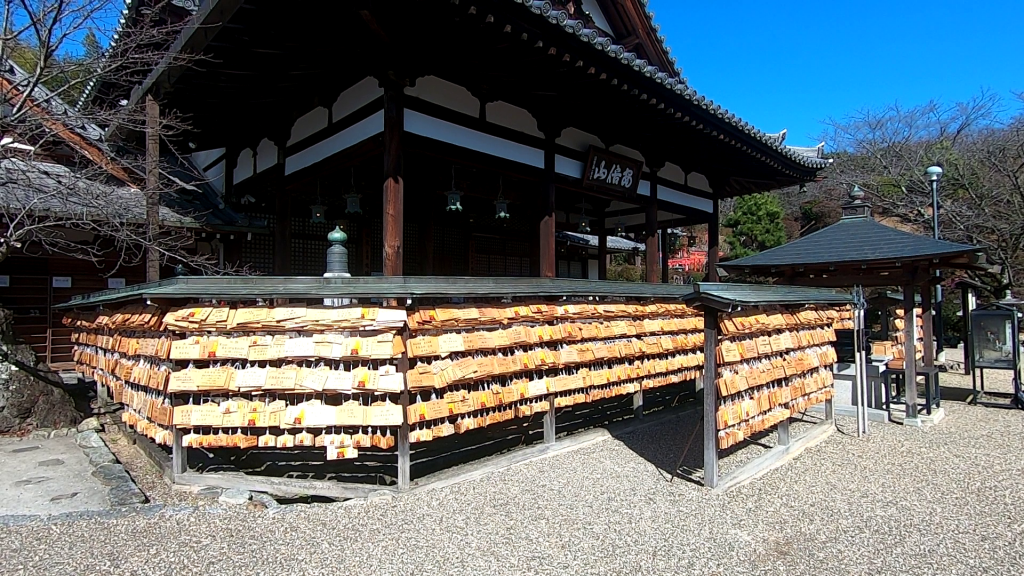
The current main hall, which dates back to 1665. Wooden ema prayer plaques surround the base.
You may also notice hundreds, if not thousands of small wooden prayer plaques, known as “ema,” surrounding the main hall. Ema are a common sight at shrines and temples throughout Japan, but it is rare to see as many as you commonly do here. This is because Abe Monju-in is associated with the idea of “gokaku” or “exam passing,” making it a very popular place to pray for those with a important test approaching (students, job-seekers, etc) or perhaps the friends and family who support them.
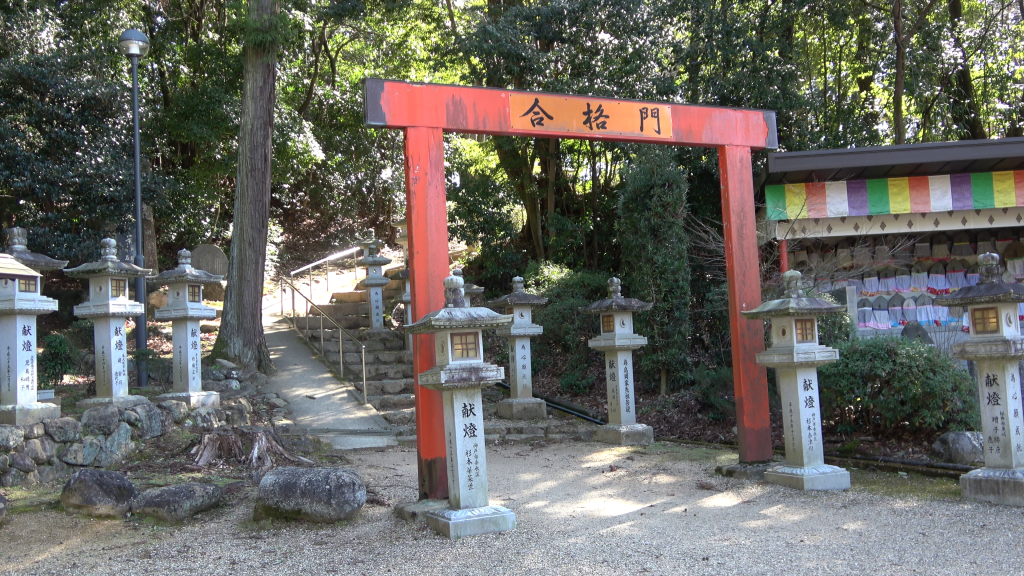
Gokaku (“exam passing”) Gate. Visitors pass under this gate to symbolize passing an exam.
One of the most visually appealing structures of the temple grounds is the Umkimi-do Hall, which stands on top of a small pond. This hall was built to worship the deity Benzaiten, who is revered at both Buddhist Temples and Shinto Shrines as a one who brings luck and is a patron god of artistic performance, among other things. Worshipers circle around the pavilion 7 times as a form of prayer to to remove one’s hardships.
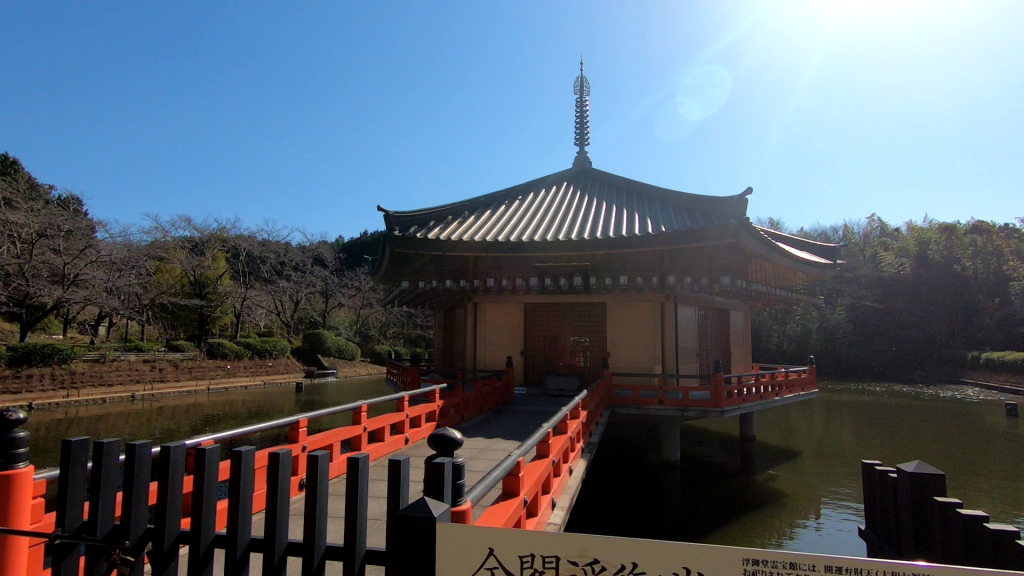
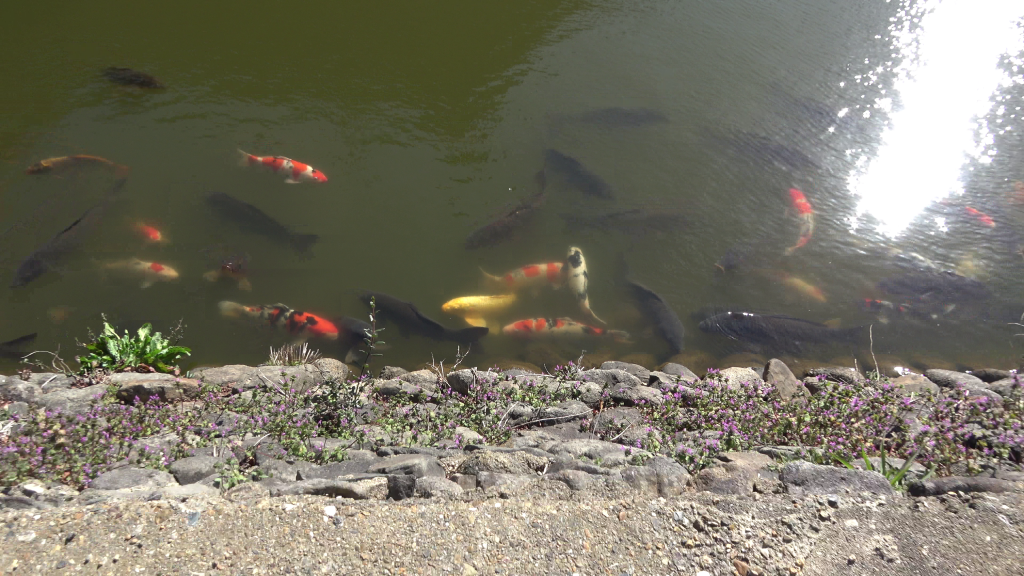
Koi fish swim in the pond surrounding the Kinkaku Umkimi-do Reiho-Kan Pavilion
Circling back to Abe no Semei, it is said that he used to make astronomical observations from a small hill east of the main hall called “Hakusan.” Up on the top of Hakusan is the astronomical observatory point once used by Abe no Semei that now offers views over the grounds of the temple, including a yearly flower design that is updated for each sign of the Chinese zodiac calendar.
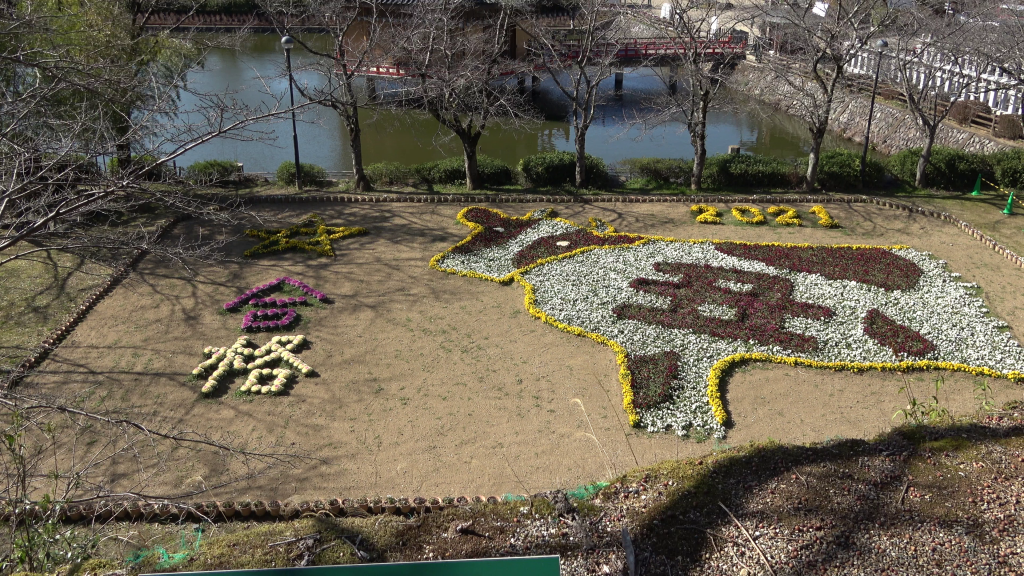
Flower design commemorating the Year of the Cow from Abe no Semei’s observatory. Notice the star symbol of Omyodo and the kanji characters for “gokaku” (“test-passing”) on the left side. This flower design changes each year, depending on the zodiac sign.
There is also a memorial here dedicated to Langdon Warner, the American archeologist who is credited with working to convince the American military leadership during World War 2 to not target Japanese cultural centers like Nara and Kyoto.
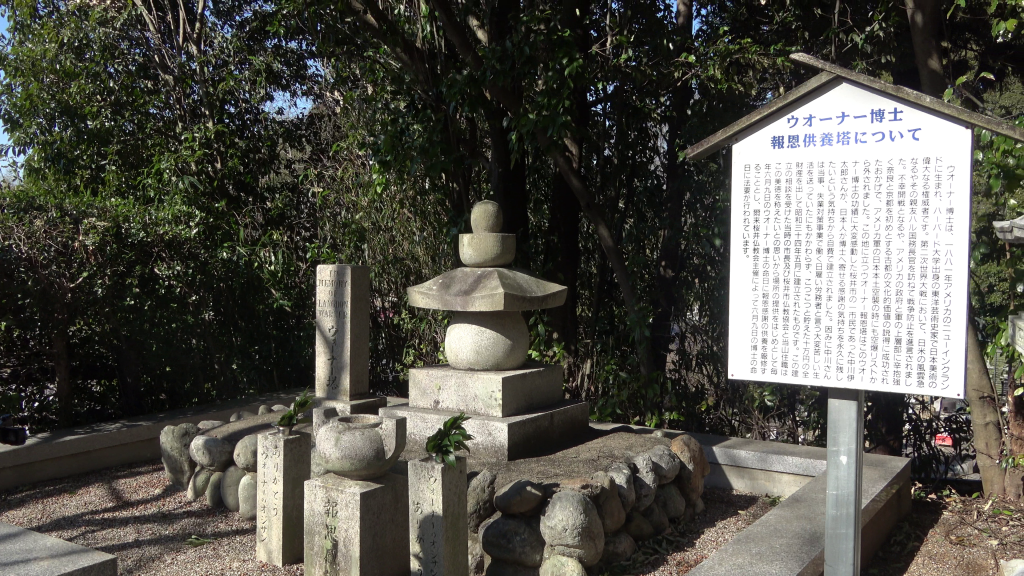
Memorial to Landon Warner
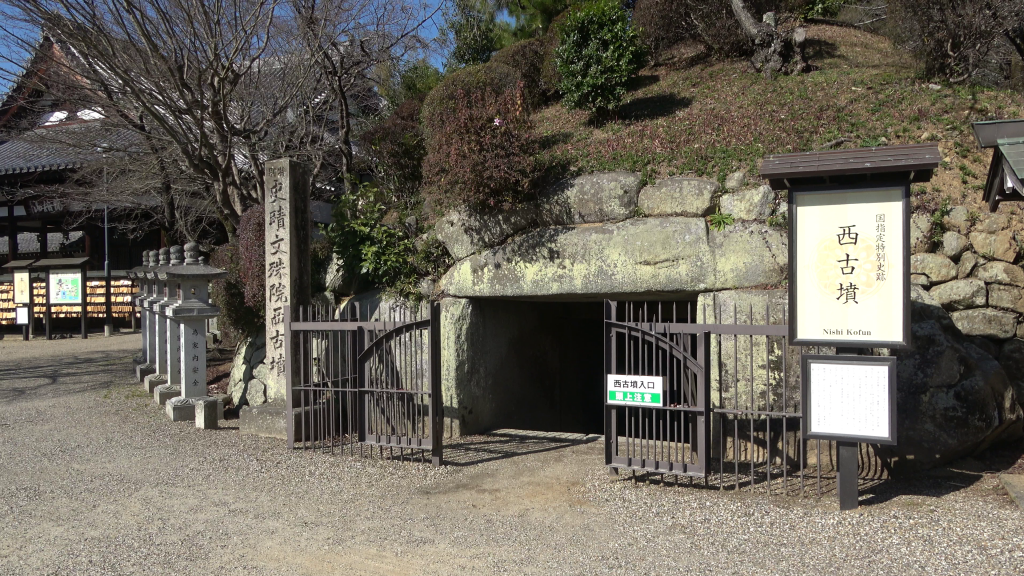
Another interesting aspect of the Abe Monju-in are the kofun tomb mounds found here. Nishi-kofun Tomb Mound, which sits in the center of the grounds, was built during the 7th century and now a statue of the Buddhist deity Fudo-myo sits inside that was said to have been carved by hand by the influential Buddhist priest Kukai (774 – 835)
As you can see, Abe Monju-in Temple offers a surprising variety of fascinating sights for sightseers to explore. For more information or guiding services for visiting the temple, please feel free to contact us here anytime at the Nara Visitors Bureau.
Access:
Abe-Monju-in Temple can be reached from Sakurai Station either by bus, or about 25-30 minutes on foot.

01
FIND YOUR FAVORITE
TRIP ON OUR WEBSITE.
SEND US AN INQUIRY.

02
PERSONALIZE THE TRIP
TO YOUR INTERESTS
WITH OUR CONSULTANT.

03
20% DEPOSIT TO CONFIRM.
BALANCE PRIOR TO ARRIVAL.
PAYMENT BY CC OR TT.

04
WE WILL
MEET YOU
AT THE AIRPORT.

05
DISCOVER THE
TREASURES!